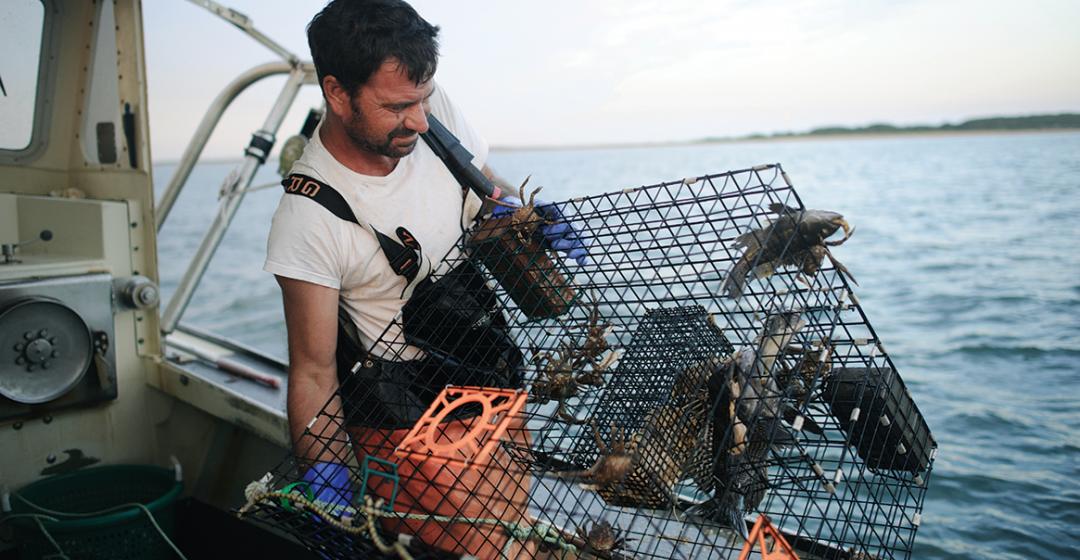On a calm, late spring morning, the Menemsha waterfront was just beginning to stir. Fishermen tended to their gear and the lone murmur of a diesel engine rippled through the harbor. It was a perennial scene of the Island’s transition into summer. But for the fishing fleet this year, it represented something deeper.
Island fishermen were just beginning to climb out of the longest off-season on record, one that began with the onset of the Covid-19 pandemic more than one year ago and has yet to fully subside. With markets all but brought to a halt, fishermen struggled to turn a profit through the summer. Some vessels didn’t launch at all. Then last November the Menemsha Fish House, one of the Island’s main commercial wholesale distributors, was shuttered by its Boston-based parent company, Red’s Best, due in part to economic pressures spurred by the pandemic.
“We kept a pulse, but when we started crawling out of the pandemic…it became clear we couldn’t run a profitable business there,” said Jared Auerbach, owner of Red’s Best, who has long championed independent, small-scale fisheries, sometimes at a loss. “That was just the reality.”
The closure left roughly one hundred Menemsha fishermen adrift, unsure of where they would be able to sell their catch whenever things returned to some kind of normal. And it posed an existential question to the fleet: without a commercial wholesaler, could the local industry continue to be a part of the national and global fish trade? Red’s Best also has wholesale locations in Boston, New Bedford, and Chatham. The Menemsha Fish House, their smallest operation, was the first and only to shut its doors.
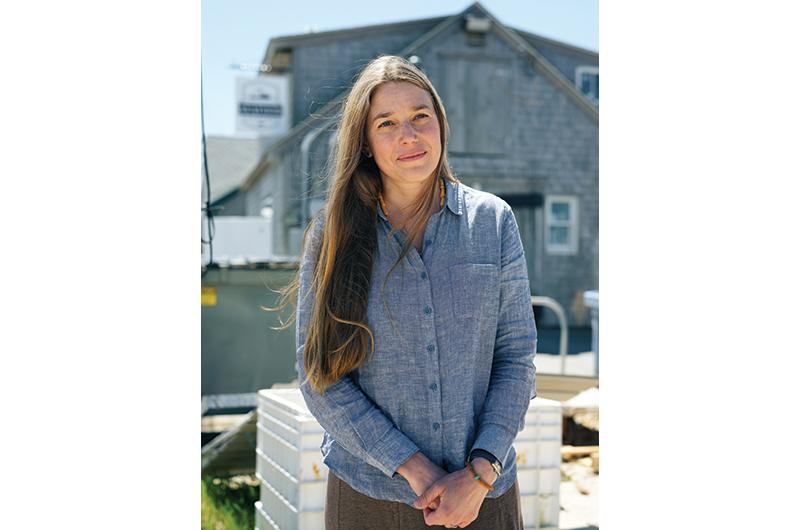
But in January of 2021, the rough waters churned up by the pandemic began to settle. The Martha’s Vineyard Fishermen’s Preservation Trust, a nonprofit group that works to support local fishermen and protect the Island’s small-boat fishing heritage, announced plans to lease the former Menemsha Fish House property, operating it as a wholesale seafood company, similar to its predecessor. It will be called the Martha’s Vineyard Sustainable Seafood Collaborative.
The transition of the wholesaler from a commercial business to a nonprofit marks a watershed in the history of the Island’s fishing community. Though some have expressed skepticism that a nonprofit can sustain the inherently commercial industry, the collaborative provides new hope for the next generation of fishermen who otherwise might have had to travel to New Bedford or some other port to unload their catch.
At the forefront of this transition is Dr. Shelley Edmundson, the executive director and a founding member, along with John Keene and Wes Brighton, of the Trust. “The world is changing. There is a lot of concern in general right now about regulations, the cost of [fishing] permits, which have become really expensive,” she said in a recent interview. “There is a lot of history behind it all. But when the Menemsha Fish House closed, it made those concerns that much more. Especially for the younger generation.”
It used to be something of a given that if the child of a fisherman wanted to stay in the industry, there would be a place in the fleet. Up through the 1970s the Vineyard was among the largest exporters of fish in Massachusetts. Behind New Bedford, Gloucester, and Boston, millions of pounds of fish were landed in Vineyard Haven, Menemsha, and Edgartown, then shipped to major cities around the country. It was a lucrative trade, evidenced by the sturdy boats that lined the harbors, the heavy stench of fish wafting through the port towns, and the many families able to make a steady living on the water.
Since then, however, consolidation of the largest fishing ports has been a continuous trend across the region and nationally. In the last forty years, the total weight of fish landed commercially in Massachusetts has remained between 250 and 300 million pounds, but the largest ports have landed a steadily increasing share. As of 2018, New Bedford racked up about half of the state’s total haul: 111 million pounds. Menemsha, twenty nautical miles away, landed 751,550 pounds that same year, according to state records. Edgartown landed 665,033 pounds.
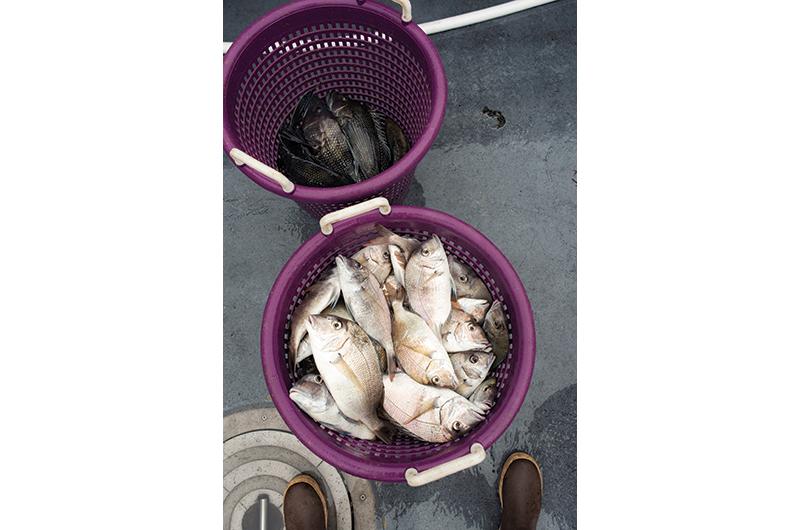
Consolidation compounds with cheaper processing and shipping in major ports. But the high cost of federal and state permits to harvest fish is a major factor in consolidation, fishermen say; costs have increased for years with no signs of retreat. For lucrative fisheries, such as scalloping, a permit can cost well more than $1 million. Relatively cheaper commercial permits, such as conch or sea bass, can cost around $50,000. The open market approach to selling permits favors large corporations, which buy permits in bulk and employ fishermen at a set rate, over independent fishermen owning their own small-scale operations.
For instance, Blue Harvest Fisheries, one of the largest fishing operations in New Bedford, is owned by Bregal Partners, a private equity firm with offices on Park Avenue in New York City. The firm owns a fleet of fifteen scallop- and nine groundfish vessels, according to its website. Last year alone, the firm purchased twelve vessels and twenty-seven permits.
“A lot of small ports have lost their commercial fishing fleets,” said director of the state’s Division of Marine Fisheries Dan McKiernan. “Permits are controlled by the highest bidder, and the outcome over time is consolidation in a very few ports.”
The price of commercial fishing permits has skyrocketed for a host of reasons, including federal and state policies in almost every corner of the economy that tend to favor consolidation and corporate control over smaller operations. But there is also no denying that the price of permits – indeed, their very existence – is a product of the scarcity of fish to catch.
In the 1980s, many fisheries in the United States were in trouble thanks to generations of chronic overfishing, environmental degradation, climate change, or other unknown reasons. Some of New England’s most prized groundfish stocks, including cod and flounder, had been declared collapsed. Among regulators, environmental scientists, and even fishermen, there is an understanding that regulations, such as limited permits, quotas, or restrictions on gear are vital to conserving the health of the many species commercially fished.
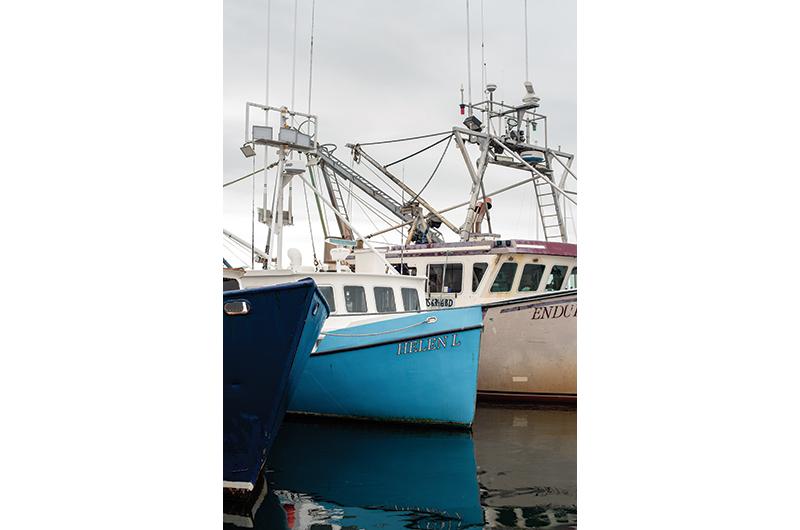
The sweeping regulations enacted since then, including permit limitations, have largely succeeded in rebuilding dozens of fisheries, such as New England sea scallops, haddock, pollack, and silver hake. Other species, however, are still in trouble. According to the National Oceanographic and Atmospheric Administration’s (noaa) March 31, 2021, status update, in New England, thirteen important commercial species are currently considered technically “overfished,” meaning their population is still too low to maintain long-term maximum sustainable levels with the pressure of being fished. These include Atlantic cod, which is still in a virtually collapsed state, yellowtail flounder, Atlantic halibut, winter flounder, and Atlantic herring.
Last October, the Trust’s Edmundson was appointed by Governor Charlie Baker to the Marine Fisheries Advisory Commission, a discreet but vital nine-member governing board charged with final approval over the state’s fishing regulations. At forty years old, she is the youngest member and currently the only woman to serve on the regulatory commission. For the Island, she is the first local representative to serve on the board since Everett Poole retired in the late 1970s. “The Island fisherman and seafood industry will have a voice on the commission for the first time in over four decades,” said commission chairman Ray Kane in an October 2020 press release.
“A lot of these communities are facing similar challenges: permits leaving, and they’re struggling with how to keep those permits around for the next generation,” Edmundson said. “It’s not unique to Martha’s Vineyard, but every community has its own types of fishermen. Being able to bring our community’s concerns to the commission is important, to make sure their voices are heard.”
Edmundson is known by many on the docks as “Dr. Shelley” because she has a Ph.D. in zoology and marine biology from the University of New Hampshire for research into channeled whelk, also known as conch, which comprises a large portion of the Island’s commercial fisheries. But it’s her work with the Trust that has really earned her the respect of the Island fishing community and her spot on the board.
Under her tenure, the Trust established a permit bank, which aims to purchase the increasingly expensive permits as they become available and hold them in perpetuity to be leased or sold to Island fishermen. In 2015 the Nature Conservancy, which had been involved in permit banking in other states, helped purchase the last groundfish permit then on the Island from the late Greg Mayhew, who at that time owned the seventy-five-foot dragger Unicorn and fished out of Menemsha.
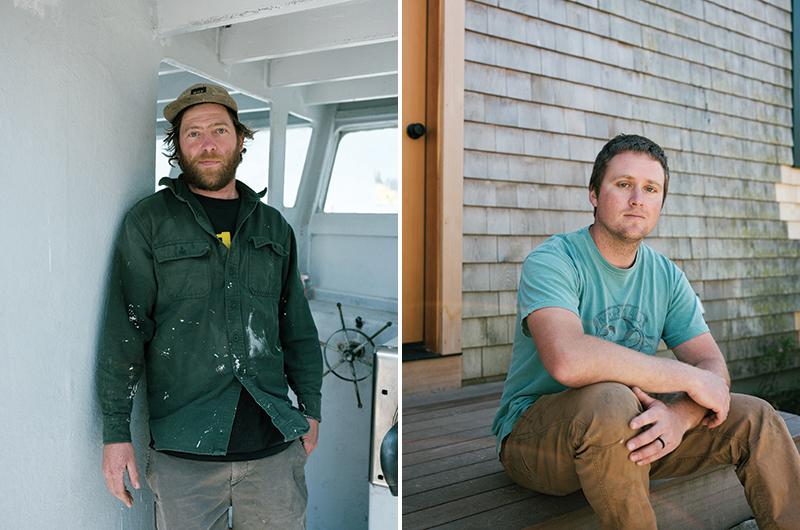
“When we started, we didn’t invent the idea,” Edmundson is quick to point out. In harbors throughout the country, she said, a movement to form independent nonprofits that protect the interest of local fishing communities has grown. These groups exist in Alaska, Maine, the Gulf Coast, and even different regions of Massachusetts. “What our group would morph into needed to be shaped according to the needs of fishermen on the Vineyard.”
Permit banks have their dissenters. Some are skeptical that nonprofit permit banks, though designed as an antidote to consolidation, are only a rebranding of the trend. And though the Trust has an application process for permits, some are concerned that the bank could favor the waterfront “in crowd,” long a theme in a close-knit industry that protects its own.
The Cape Cod Commercial Fishermen’s Alliance, the largest permit bank in the region and an inspiration to the Trust, provides fishing rights to more than 100 fishermen, who brought in seven million pounds of fish last year. It’s still only a drop in the bucket compared to the massive ports such as New Bedford, but some fishermen advocacy groups call for regulations as the only antidote to consolidation.
McKiernan, of the state’s Division of Marine Fisheries, noted that proposed federal regulations may help. But regulations, in his opinion, are generally never fully effective in stemming excessive consolidation, and the banks are a good addition to the mix. “I think it is a viable alternative, and probably necessary if these communities want to maintain that culture and lifestyle. Martha’s Vineyard has worked hard to hold onto that.”
Four years ago, the Trust secured a permit for conch, sea bass, and scup. The permit once belonged to Luke Gurney, a revered Island fisherman who died at sea in 2016. “While his death was such a tragedy, being able to work with the state and keep his permit local was what he would have wanted,” Edmundson said. Gurney was a board member of the Trust.
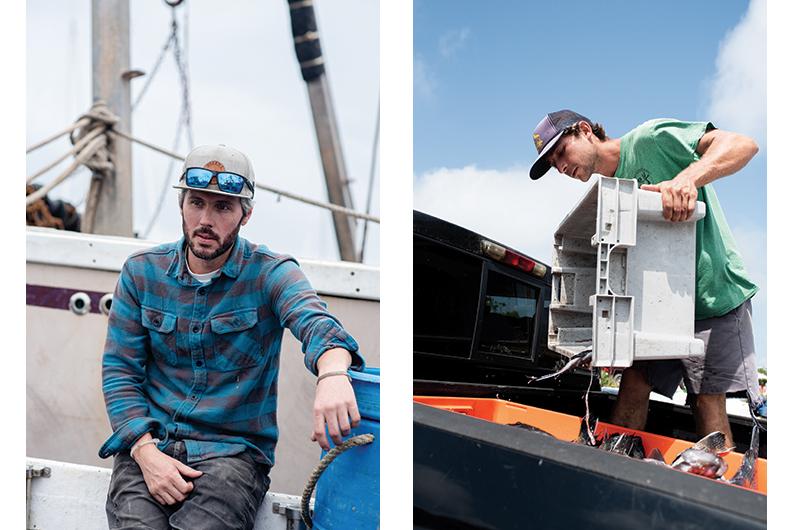
The group currently also provides one federal scallop quota to an Island fisherman, Sam Hopkins, who runs day trips out of Menemsha. And this summer will mark not only the first but also the second state permit directed through the Trust and fished by the next generation of fishermen. One will be fished by John Osmers, a second-generation fisherman from Chilmark. He began fishing for conch at a young age with his uncle, later going on to fish on the decks of boats owned by his friends. He was eager to secure his own permit, but each year presented new barriers of price and regulation. “It’s gone from hard to almost impossible,” he said.
Osmers has been working to fix his boat, a thirty-five-foot Novi, and would have launched last summer if the pandemic hadn’t added unforeseen challenges. He launched his boat this year, on May 8, and will be able to work on the water to pay off his debt to the Trust’s permit bank in subsidized installments, which made the opportunity possible for him.
“It means a lot to me. It’s important to keep the Island fishing,” he said. “It’s something that seems like it’s almost disappearing.” His younger brother, Otto, is also a commercial fisherman.
The other permit will be fished by Will Diamond, a thirty-five-year-old first-generation fisherman from Vineyard Haven. He began fishing in his early twenties, harvesting quahaugs with a bullrake – “fishing in its simplest form,” as he described it. Later on he worked on the boats of friends in almost every fishery on the Island, but he always kept his eye on securing his own commercial permit. “I really wanted something to start my own business,” he said. “Permits are just so hard to come across these days.”
Last year Diamond was approached by Edmundson, who had secured twenty lobster tags, each of which allow the commercial use of one lobster pot, from a retiring Island fisherman. “I was starting to think getting my own permit might be impossible,” he said, but following his conversation with Edmundson he applied for the permit through the Trust. “If it wasn’t for the Trust, this definitely wouldn’t have happened. It’s the whole principle of what they are doing.”
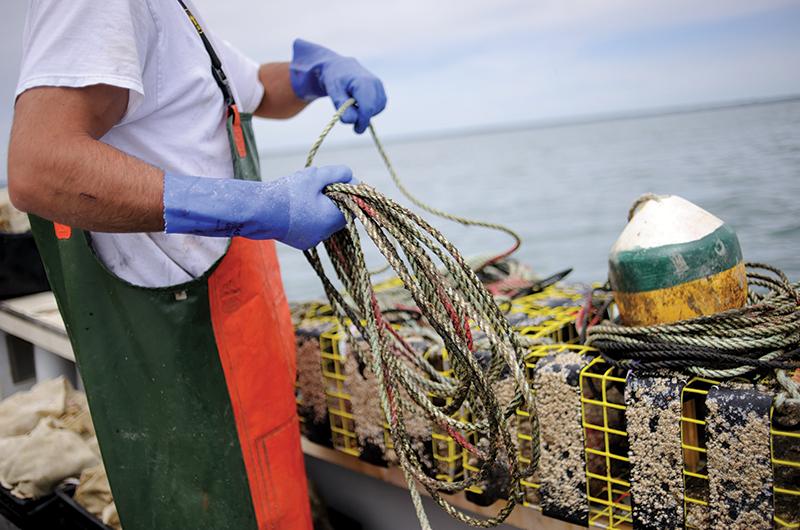
McKiernan agrees. “This is the way to go,” he said. “When a community wants to keep their fleet, the community steps up and says, ‘This is important to me.’”
Commercial fishing is more than a business, it’s a part of the long cultural heritage of the Island. For more than a century, Menemsha Harbor has attracted artists from all over who come to paint the fleet of vessels, now mostly rusted, tethered to the docks. But what’s not visible in these portraits are the mounting challenges that threaten its existence. “We’re the cowboys of Montana,” said one commercial fisherman, who was pushed out of the industry by the economic realities of the current day. “Sometimes it feels more like a rodeo.”
Fishermen are a fiercely independent group, which comes with the territory of working in the open ocean, miles from shore. So it’s no surprise, perhaps, that Edmundson said there was hesitancy at first to embrace hand-up initiatives, such as the permit bank. But when squaring off against the economic force of investment firms, local fishermen came to appreciate having an advocate in their corner. When the Trust began planning to lease the Menemsha Fish House property as a commercial wholesaler, more than 250 people and businesses donated in support of the campaign. More than $515,000 was raised by February, $15,000 above their goal for reopening the wholesaler.
Edmundson, who was sworn into the regulatory commission on Zoom from her living room as the pandemic raged, believes there is a long battle ahead to revitalize the local fishing industry. Having a commercial wholesaler is a vital piece of the puzzle. She said the goal of the sustainable seafood collaborative isn’t to compete with fish markets or other smaller wholesalers on the Island. Instead, she is hoping to rebuild demand for locally harvested seafood, which has also seen a decline.
“You go to the fish markets here, and you think that everything is coming from the water and the boats you see in the harbor. And that’s not necessarily true,” she said. “Most of the fish we eat here is imported, and a lot of what we catch
is exported.”
There is a disconnect between the amount of fish eaten on the Island and the lack of support for the local fisheries, Edmundson said. She plans to connect with the many chefs, restaurants, and caterers on the Island and spread awareness about the abundance of fish that is caught locally and is readily available. “Our whole purpose is supporting local seafood,” she said. “And the people who catch it."

